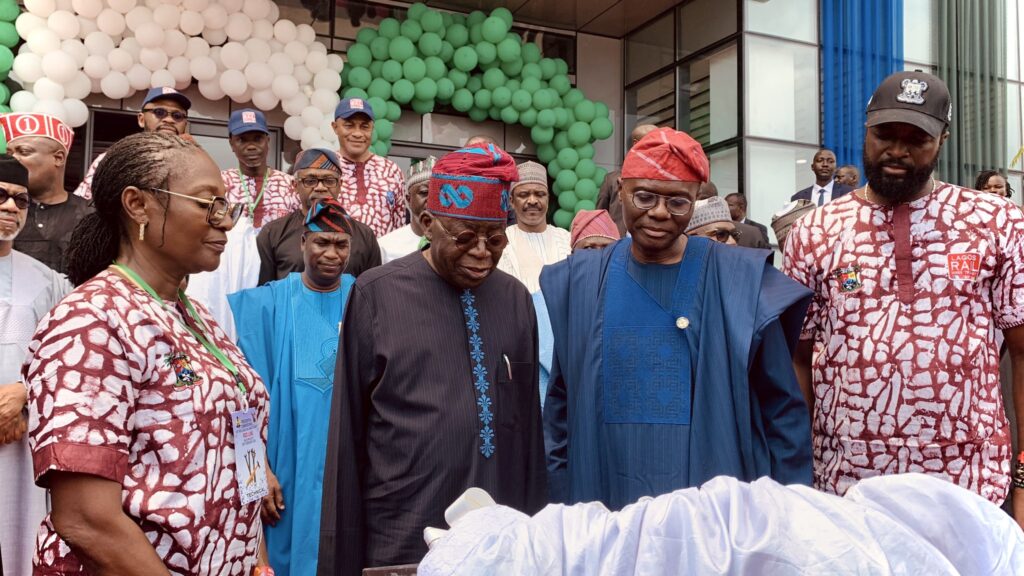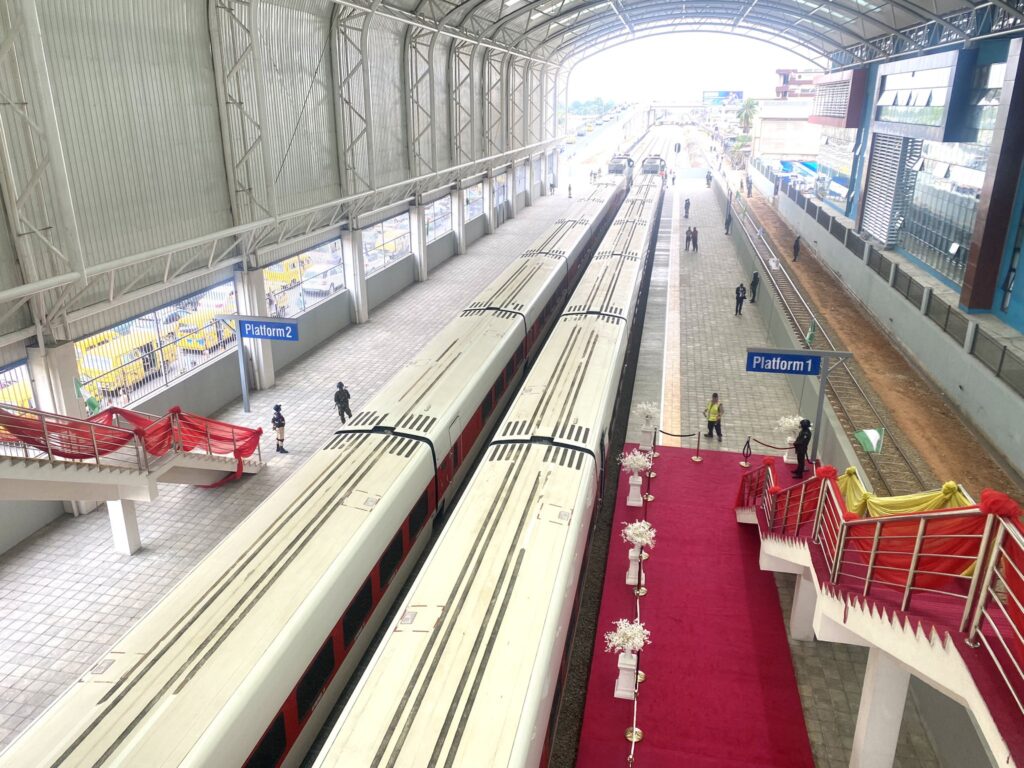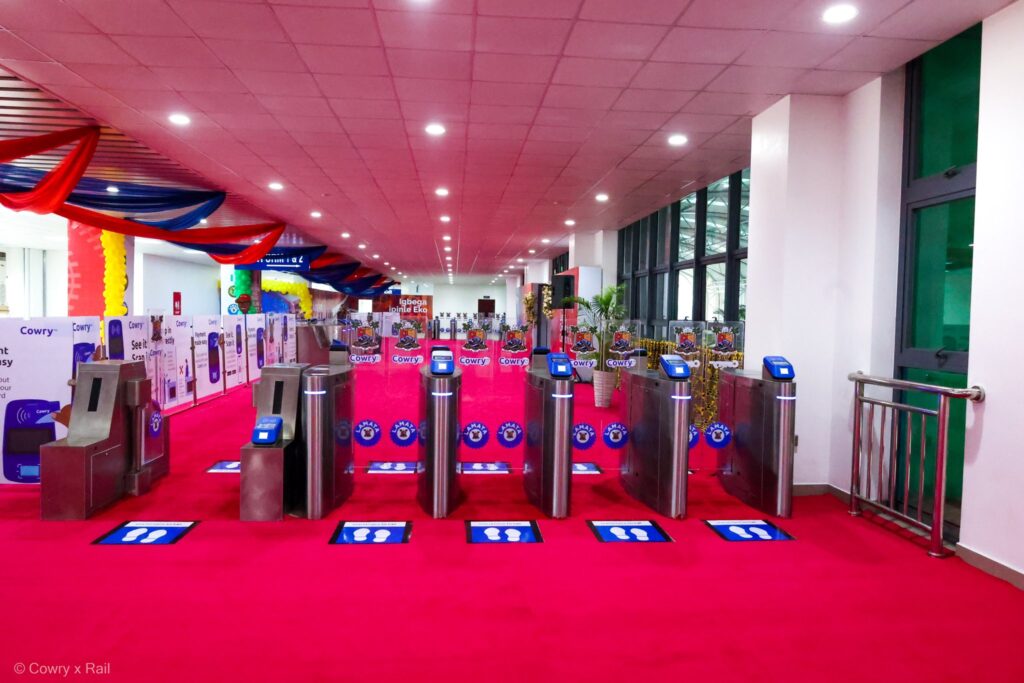The Lagos Red Rail Line was officially launched on February 29, 2024. The unveiling of the Lagos Red Rail Line, the first phase of the project built by a Chinese company, marks a new era in the journey towards modern and efficient urban transportation in the bustling Nigerian metropolis.
The genesis of the journey started in 1983 with a dream from the then-civilian governor of Lagos State, Late Lateef Jakande, who first conceived the idea of the blue rail line, to Asiwaju Bola Ahmed Tinubu, who resumed office in 1999, adding the red rail line after deliberations at Ehingbeti, the Lagos ThinkTank.
Lagos Metropolitan Area Transport Authority (LAMATA) was instituted by Act, and groundwork began. Groundbreaking for the blue rail was done in 2003 by the Tinubu Administration.
Resuming office in 2019, Governor Sanwo-Olu prioritized the rail projects, broke ground on the red rail project in 2021, and accelerated construction, leading to the commissioning of the blue rail line in February 2023 and the red line in February 2024, a stunning feat.
The Lagos Rail Mass Transit (LRMT) Red Line is here. #LAMATA #Keepinglagosmoving #LAMATAredlinerail#Lamatagoingred pic.twitter.com/RizuVNEgAC
— Lagos MetropolitanArea Transport Authority LAMATA (@Lamataonline) February 28, 2024
The launch of the Red Line, which is expected to move about 500,000 passengers daily, was witnessed by the crème de la crème of the nation’s political class, including the President of Nigeria, Bola Ahmed Tinubu, the Governor of Lagos, Kwara, Ogun, Ekiti, Imo, and Kogi states, the business class, and the diplomatic community. In his speech,
The President of Nigeria, in his speech during the unveiling of the red rail line, praised LAMATA for their hard work and dedication to delivering projects that directly impact the people, starting with bus rapid transit (BRT) and now mass transit with trains.

Governor of Lagos State, Babajide Sanwo-Olu, also spoke on the efforts of the state government to boost train passenger trips with the signing of new sets of six rolling stock, three each for the Blue and Red Lines.
The red line rail is quite different from the blue rail, which is an evelated train track. The Lagos red rail line moves on an existing standard gauge railway line that the Lagos to Ibadan Nigeria Railway Corporation (NRC) uses.
Lagos Red Rail Line Mode of Operation
The red rail line project is a 37-kilometer north-south rail route proposed to run from Agbado to Marina with 13 stations (Agbado, Iju, Agege, Ikeja, MMIA International, MMIA Domestic, Oshodi, Mushin, Yaba, Ebute Meta, Iddo, Ebute Ero, and Marina.). It will also provide an alternative to road and water modes of transport within Lagos metropolis to reduce traffic gridlock.
The red rail shares tracks with the Nigeria Railway Corporation from Ebutte-Metta to Agbado. This is the first phase, which is 27km from Agbado to Oyingbo, and it has eight (8) stations, mostly Agbado, Iju, Agege, Oshodi, Ikeja, Mushin, Yaba, and Oyingbo.
The first phase of the red line rail project, which moves every 15 minutes, is expected to facilitate 37 trips daily and move more than 500,000 passengers daily. However, when the project is fully implemented, it will move 1 million passengers daily.

How to board the Lagos Red Rail mass transit
- Plan your journey.
- Proceed to the train station and buy a cowry card.
- Locate your terminal and check your departure time.
- Ensure you swipe and tap at the e-platform to access the gate and proceed to the boarding area.
How do I pay for the Lagos Red Rail Line?
The Lagos State Cowry Card by the touch-and-paysystem,m with over 4.2 million users, is the only acceptable mode of payment and official payment method at the station.
The Red Line Rail implements advanced passenger infrastructure through the integration of the Cowry Card system, optimizing convenience and accessibility for passengers.

Download the Cowry App on Android and iOS, or visit any BRT terminals, trains, or ferries to purchase a Cowry card.
Conclusion
A report estimates that Lagos loses over 4 trillion naira annually to traffic congestion, as thousands of productive hours are lost in “go slow” every other day. The success of the red rail line, like the blue line, marks the power of vision, resilience, and continuity in government.
This mode of transportation grants Lagosians 37km of premium travel time, links five bus hubs, and, at completion, will link the blue rail line to complete the Lagos intermodal transport plan.
LAMATA also signed a deal with China Civil Engineering Construction Corporation (CCECC) for the commencement of the second phase of the Red Line, which will connect with the Blue Line at National Theater Station.
The Red Line Rail Project represents a significant milestone in Lagos’ transportation infrastructure development, and its operation promises to enhance connectivity, ease commuter burdens, and contribute to the city’s overall economic growth and development.
Frequently Asked Questions (FAQs)
How long is the Red Rail Line? The red rail line is 37 km long, while the first phase from Oyingbo to Agbado is 27km long.
How many stations does the Red Rail line have? There are a total of 13 stations from Marina to Agbado.
What is the capacity of the Red Rail line? It has the capacity to transport 1.1 million people daily when fully operational.
Who started the Blue Rail Line in Lagos? The train network was first suggested in 1983 by the Lateef Jakande administration, and it was officially launched in 2003 by Bola Tinubu, an ex-governor of the state.
What is the green line in Lagos State? A 68-kilometer rail-based commuter service called the Green Line Rail Project will run between Marina and the Lekki Free Trade Zone. Under advantageous business circumstances, the proposed project will be built through a Build-Operate-Transfer (BOT) public-private partnership.
How many rail lines are there in Lagos? Six rail lines. The Lagos Metropolitan Area Transport Authority (LAMATA) is creating the Lagos Rail Mass Transit (LRMT) on behalf of the Lagos State Government (LSG), which is funding the project. The LRMT is a network of urban rail-based systems covering six major corridors and one monorail route of high commuter traffic demand within and beyond the metropolitan Lagos, extending to border areas of Ogun State.
How many stations are on the Lagos Red Rail Line? The red rail line stations are Agbado, Iju, Agege, Ikeja, MMIA International, MMIA Domestic, Oshodi, Mushin, Yaba, Ebute Meta, Iddo, Ebute Ero, and Marina.
Is the Red Rail Line electric? Unlike the electric-powered Blue Line, the Red Rail Line will utilize a diesel-powered system known as the Diesel Multiple Unit (DMU). DMU employs on-board diesel engines to propel multiple-unit trains. This choice of transmission aligns with the project’s objectives and operational requirements.

